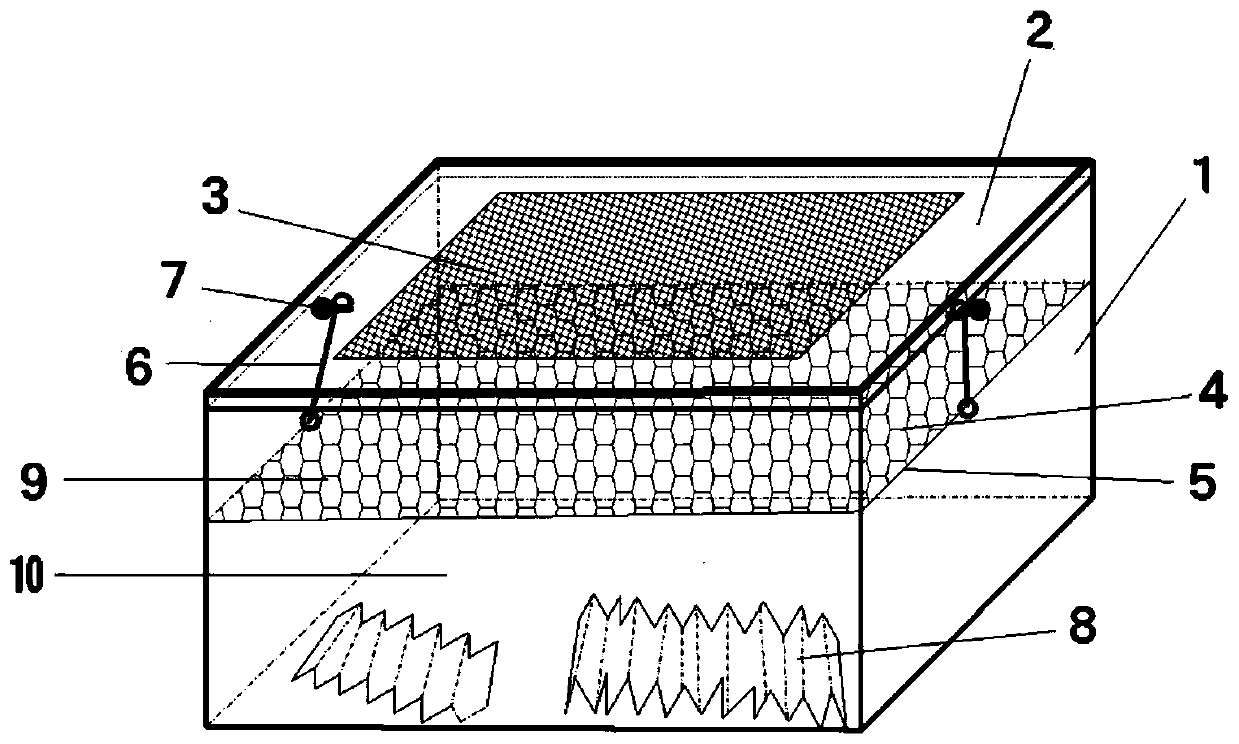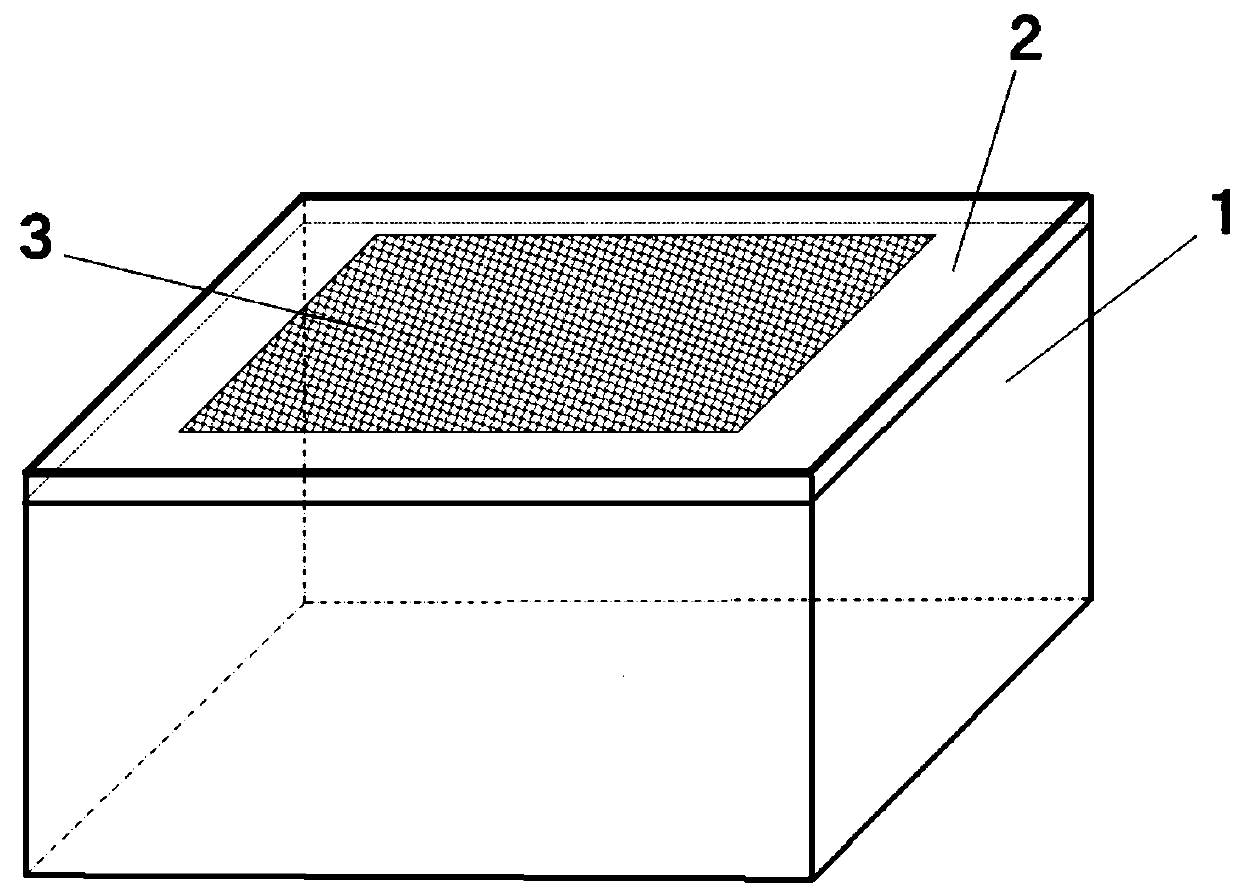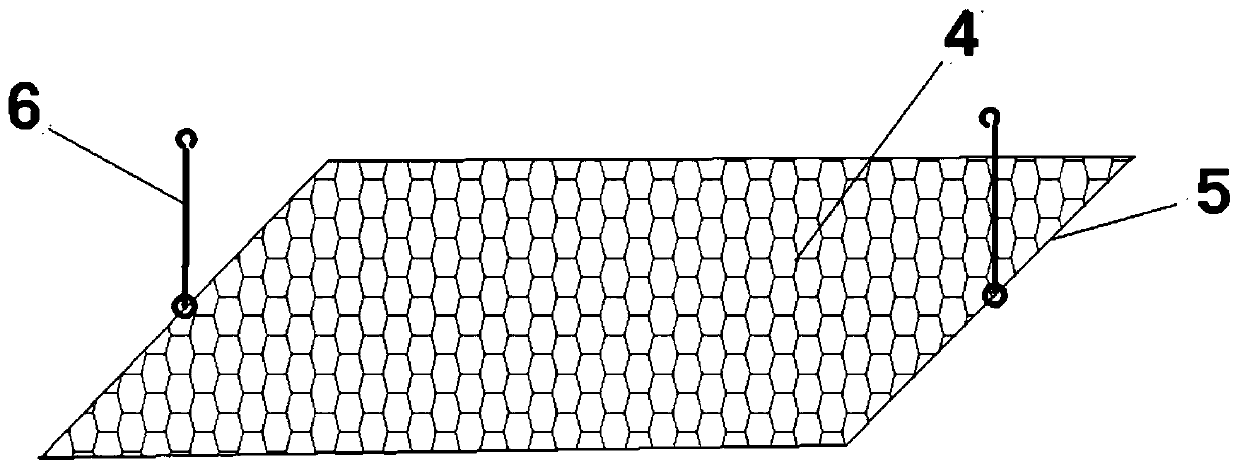Insect breeding device and breeding method
A technology for insects and larvae, applied in chemical instruments and methods, solid separation, sieving, etc., can solve the problems of increased mortality due to insect damage, expensive feeding devices, and larvae carried away, so as to avoid insect damage, The effect of saving time and reducing workload
- Summary
- Abstract
- Description
- Claims
- Application Information
AI Technical Summary
Problems solved by technology
Method used
Image
Examples
Embodiment 1
[0053] The present invention uses materials such as a plastic insect box, gauze and filter paper to make a feeding device for feeding the seven-spot ladybug larvae, aiming at improving the feeding efficiency of the seven-spot ladybug and reducing the abnormal casualties of the seven-spot larvae.
[0054] The larva rearing device is a cuboid with an overall size of 25*20*12cm, and its main material is a hard transparent plastic box with a thickness of 5mm. Such as figure 1 As shown, the device includes a box body 1 , a box cover 2 , a breathable net 3 , a gauze 4 , a frame 5 , a hook 6 , a load-bearing fixture 7 and a filter paper 8 .
[0055] The box body 1 is a transparent plastic box, the box cover 2 is a transparent plastic box cover, the air mesh 3 is a fine mesh gauze, the gauze 4 is a coarse mesh gauze, the material of the frame 5 is a wire ring, and the filter paper 8 is Corrugated strips of filter paper. The gauze 4 and the frame 5 constitute a mesh screen. Placemen...
Embodiment 2
[0067] In order to verify the superiority of the present invention, the specially designed experiment is as follows. Experiment is provided with experimental group and control group, and experimental group is to utilize device described in the present invention to raise seven-star ladybug, and control group is to utilize traditional insect raising box (traditional insect raising box is a square transparent plastic box) to raise seven-spot ladybug, each raising All boxes were filled with newly hatched larvae, and the experimental group and the control group were set up with 50, 70, 90, 110, and 130 newly hatched larvae for gradient experiments, and the bean sprouts with aphids were replaced once a day. , Relative humidity 70%±10%, photoperiod 16L:8D. The number of pupations was counted, and the pupation rate was calculated. The results are shown in Table 1.
[0068] Table 1
[0069]
[0070] As can be seen from Table 1, the pupation rate of the control group is between 70-...
PUM
| Property | Measurement | Unit |
|---|---|---|
| Aperture | aaaaa | aaaaa |
| Aperture | aaaaa | aaaaa |
Abstract
Description
Claims
Application Information
 Login to View More
Login to View More - R&D
- Intellectual Property
- Life Sciences
- Materials
- Tech Scout
- Unparalleled Data Quality
- Higher Quality Content
- 60% Fewer Hallucinations
Browse by: Latest US Patents, China's latest patents, Technical Efficacy Thesaurus, Application Domain, Technology Topic, Popular Technical Reports.
© 2025 PatSnap. All rights reserved.Legal|Privacy policy|Modern Slavery Act Transparency Statement|Sitemap|About US| Contact US: help@patsnap.com



